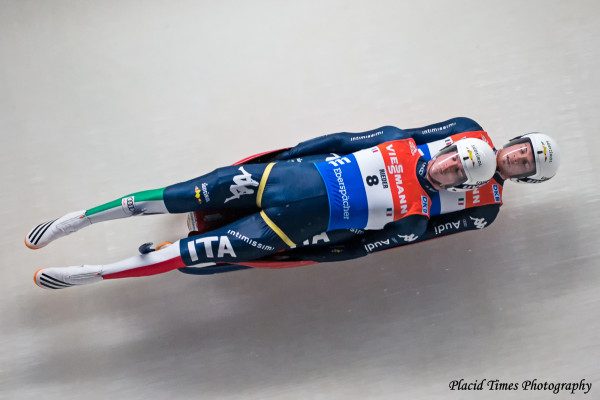Guest post by John DiGiacomo

As a professional photographer who covers winter sports, I am continually subjecting my equipment to extreme elements and challenging lighting conditions. These images from the Viesmann Luge World Cup Event, held in Lake Placid, NY are a small example. The event started several hours after sunset, in wintry conditions.
With competitors reaching speeds in excess of 70mph and the track lit by sodium vapor lights, what’s a photographer to do to produce useable images? Knowing I would need a minimum shutter speed of 1/2500th to produce a sharp image, I needed to push the ISO on my Nikon D4 to 12,800 and shoot wide open with my Sigma 120-300mm F2.8 lens. Also, I knew that I would have to shoot in RAW and not JPG, as I needed the flexibility of tweaking the white balance and reducing noise.
With all these variables to consider, as well as the pressure of ensuring that I had a sharp image of every competitor the last thing I want to concern myself with is how is my equipment going to hold up to the elements. By the time the race concluded my Sigma 120-300mm F2.8 lens had ice forming on it, but I was confident that this would not be a problem thanks to its rugged design.